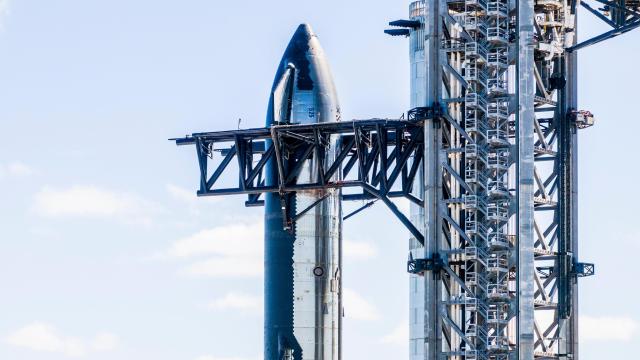With a fully stacked Starship on the pad awaiting a license to launch, SpaceX has seemingly lost its patience with the regulatory process governing its rockets. The company is calling on the Federal Aviation Administration (FAA) to increase its efficiency in issuing launch licenses, according to media reports.
On Wednesday, SpaceX is meeting before the U.S. Subcommittee on Space and Science, and company officials will urge that the FAA double the staff in charge of issuing space launch licenses, and to also prioritize programs that serve national interests, Ars Technica reported. SpaceX also suggested that parties applying for licenses with the FAA should be given the option to help pay for independent third-party technical support during upcoming surge times while the agency goes through its hiring process.
“Their mission is to enable safe spaceflight,” a SpaceX official told Ars on background. “We cannot give up on the safety side, but could there be a little bit more emphasis on the enable side?”
So far this year, SpaceX has launched more than 70 rockets, with plans to increase its rate by about 50 per cent for 2024. Company officials, however, are concerned that the FAA cannot keep up with its growing launch capacity, as well as increasing launches from other private companies.
The company’s founder Elon Musk is largely outspoken against imposing higher taxes on the rich, including the billionaires of the space industry. And yet it seems that increased funding to government agencies could potentially benefit SpaceX and accelerate its developmental processes.
“With the flight rates that are increasing, with the other players that are coming on board, we see there’s potentially a big industry problem coming where the pace of government is not going to be able to keep up with the pace of development on the private-sector side,” SpaceX executive William Gerstenmaier told The Washington Post in an interview published Tuesday.
Earlier this week, SpaceX shared photos on X (formerly Twitter) that showed its Starship rocket fully stacked atop its launchpad in Boca Chica, Texas, with the company writing: “Starship fully stacked while team prepares for a launch rehearsal. We continue to work with the FAA on a launch license.” The rocket was destacked later the same day.
The FAA closed its investigation into the inaugural launch of Starship and gave SpaceX a list of 63 corrective actions to implement before it can fly its megarocket again. These actions entail a redesign of the vehicle’s hardware to prevent leaks and fires and a modification of the launch pad to boost its resilience, after which the FAA will likely want to conduct a subsequent review before granting SpaceX its launch license.
Starship’s maiden launch, which took place on April 20, ended abruptly when the rocket was forced to self-destruct nearly four minutes after liftoff. The self-destruct sequence did not immediately result in the disintegration of the Starship prototype, while the launch caused excessive damage to the launch mount and scattered huge amounts of dust and debris to the surrounding area.
Despite its flawed test flight, SpaceX has been eager to see Starship launch again. Starship stands at the forefront of SpaceX’s spaceflight ambitions, which it plans to use to launch its next generation Starlink satellites, as well as land astronauts on the Moon as part of NASA’s Artemis program. And of course, SpaceX founder Elon Musk wants to use the megarocket to transport thousands of colonists to Mars.
SpaceX has been known to adopt an aggressive approach when it comes to the development of its rockets, and the company is not afraid to watch its prototypes explode one after the other until it finally gets it right. It seems that SpaceX is asking the regulatory body of the FAA to catch up with its aggressive pace.
“We’ve been ready to fly for a few weeks now,” Tim Hughes, SpaceX senior vice president, told The Washington Post. “And we’d very much like the government to be able to move as quickly as we are. If you’re able to build a rocket faster than the government can regulate it, that’s upside down, and that needs to be addressed. So we think some regulatory reforms are needed.”
SpaceX is highlighting the national significance of its Starship rocket, given its vital role in NASA’s mission to send humans back to the Moon in 2025. “There should be some sort of prioritization relative to programs of national importance,” Hughes added. “For instance, launches that serve the Artemis program. One would think that those would be treated with the utmost efficiency, all within the context of protecting public safety.”
As the space industry rapidly grows, it’s possible that the FAA might not be able to meet all its demands at once. SpaceX, on the other hand, may be feeling the heat from delays in its development of Starship as NASA expresses concern that the company may be responsible for a later touchdown on the lunar surface.
The FAA is primarily and understandably concerned with the safety of those on the ground. During the interviews, SpaceX officials did mention public safety, but the greater emphasis seemed to be on the speed at which the company can launch its rockets. “I want to stress we’re not saying we want to put public safety at risk in any way, shape or form. We want to protect public safety. But we want to move as fast as we can move within that framework,” Gerstenmaier said.
